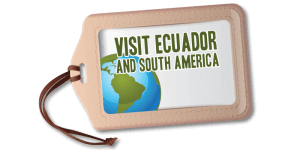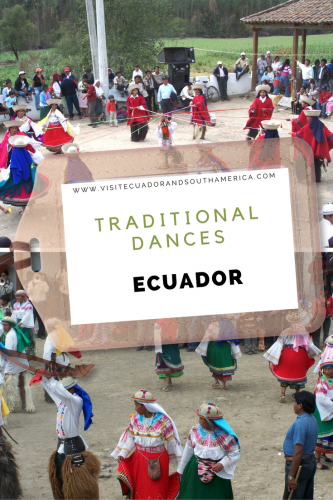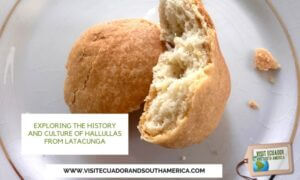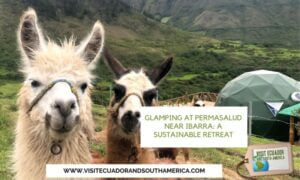Traditional dances from Ecuador – South America
Welcome to another exploration of the vibrant cultural tapestry that is Ecuador! As you may know by now, if you have already read some of my posts, Ecuador is located on the equator, latitude 0, and nestled in the Andes Cordillera. This unique geographical position bestows upon the country a rich blend of ecosystems and cultures. Despite its relatively small size, Ecuador boasts a remarkable diversity that extends beyond its landscapes to encompass its people, traditions, and folklore.
Folklore in Ecuador is a vibrant expression of this diversity, manifesting in myriad forms that reflect the multifaceted heritage of the nation. From ancient indigenous traditions to influences from colonial history and beyond, Ecuador’s folklore offers a captivating glimpse into its cultural heritage. Today, we delve into one of the most captivating aspects of Ecuadorian folklore: traditional dances.
Folkloric dances in Ecuador
Folkloric dances in Ecuador are as diverse as the landscapes that shape the country’s identity. They vary according to region, indigenous group, and historical influences, offering a colorful tapestry of movement, music, and tradition. Beyond the dance itself, these performances often showcase traditional clothing, further enriching the sensory experience and providing insight into the cultural significance of each dance.
Join me as we embark on a journey through the rhythms and rituals of Ecuadorian folkloric dances. From the highlands of the Andes to the lush jungles of the Amazon, we’ll discover the stories, traditions, and vibrant expressions that animate Ecuador’s cultural landscape.
If you are planning on visiting Ecuador, here some of the top places to see in Ecuador.
 If you are in South America, I would love to see your pictures.
If you are in South America, I would love to see your pictures.
Ecuador’s population
But, what makes this country so diverse and, at the same time, its folkloric dances so special has to do especially with the different mix of its population.
Most of the population is mestizo, a mixture of European and Incas or other indigenous groups, and then there is a small 10% of Afro-Ecuadorians. There is a 10% of European descent, being Italy, France, Spain and Germany main countries of descent.
Thus, not uncommon to find in the bigger cities International Schools for French, Italian, German, English speakers and courses to learn these languages.
Among mestizos, we have included indigenous groups, and it is worth noting that Ecuador has 14 ethnic groups, each with its special traditions, dialect, and dances.
Here are two short videos of some folkloric dances in Ecuador and Latin America. I will show you some of the traditional clothing and dances in the country and continent.
Enjoy
About the video:
The first part was performed by the indigenous group from Imbabura, located two hours north of Quito. Their beautiful bright and colorful embroidered blouses have designs inspired by ancient civilizations located in the Andes.
The second group of dancers is from Pujili, from Tungurahua, located South of Quito.
The third and last group comprised the chagras (Andean cowboys) from Machachi in the province of Pichinca, not far away from Quito.
About this video:
The first part of the video performed by a couple is tango, a popular dance from the 80s. It started in Río de la Plata, near Argentina and Uruguay
The second dance is the well-known samba from Brazil. A lively, colorful and vibrant dance.
Then at the end you will find a medley with some of the traditional songs and dances from Cuba, including:
- Danzón.
- Mambo.
- Cha-cha-cha.
- Bolero.
- Salsa.
And this video below is of one of the festivities celebrated by the inhabitants of Latacunga, located to the South of Quito.
Book a tour in Ecuador
Conclusion
In conclusion, the traditional dances of Ecuador and South America represent far more than mere entertainment or performance. They are living expressions of a rich cultural heritage, passed down through generations and imbued with meaning, symbolism, and history. From the exuberant rhythms of the Bomba to the graceful movements of the Sanjuanito, each dance offers a window into the soul of Ecuador, revealing its diversity, resilience, and vibrant spirit.
So, the next time you find yourself in Ecuador or exploring the rich tapestry of South American culture, be sure to seek out these traditional dances. Whether you witness them in a bustling city plaza, a remote mountain village, or a verdant jungle clearing, you’ll be captivated by the beauty, energy, and cultural significance that they embody. And remember, beyond the steps and rhythms, lies a world of stories, traditions, and shared humanity waiting to be discovered.
Are you planning a trip there soon? Comment below or send me an email, I can help you with more tips.
PIN IT FOR LATER

.
This is an excellent source of information and tips, maps, and all you need if you plan on visiting Ecuador. I personally like the option of having a hard copy version where I can take notes and have at hand.
Don’t just dream it. Make it happen. Plan your South American trip with a local!
Take a look at this list of travel resources to plan your trip and travel in South America.
Day dreaming about your trip to South America? Order here your Free Ebook. I share with you some useful tips & resources for a memorable trip!
Finally, I would like to invite you to follow me on Facebook, Twitter, Pinterest, and Instagram. In addition, you can subscribe on YouTube.
Send me an email for help planning your trip: info(at) visitecuadorandsouthamerica(dot)com.
Save
Save
Save
Save
Save
Save
Save
Save








